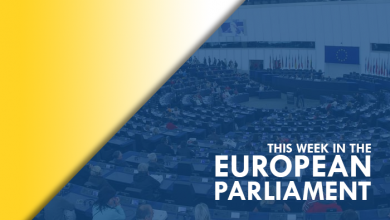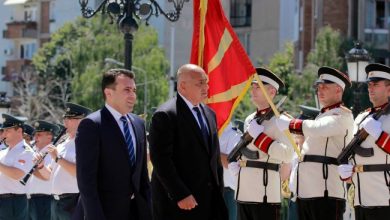The Next Enlargement Wave: Bosnia and Herzegovina Lags Far Behind

‘The Next Enlargement Wave’ is an article series providing information about the candidate countries for EU membership and their path ahead. In this seventh and last instalment, we will look at Bosnia and Herzegovina.
Since the birth of the Coal and Steel Community in 1952, the European project has grown from a meagre 6 founders to its current 28 members through six distinct enlargement waves. Now, the European Union seems to be ready for a seventh wave – this time incorporating the Western Balkans within the bloc. But how does a country go about joining the EU, exactly? It is necessary to meet determinate criteria before even being considered as a potential candidate member. For example, countries must be ‘European‘, something which has proven of difficult interpretation in the past. When Morocco applied, the EU turned it down on the basis that it was not a European country, but only a few years later Cyprus’ application was accepted – even though the island is technically in Asia. Nowadays, it is down to a purely political decision on a holistic basis.
European countries which wish to apply for membership also have to show that they fulfil the so-called Copenhagen criteria. This requires potential candidate countries to demonstrate respect of democracy and fundamental freedoms, the existence of a functioning market economy, and the intent to accept the obligations formed by EU membership. It is only once the Copenhagen criteria are fulfilled that the accession negotiations can finally begin. These negotiations involve the complicated process of adapting the candidate country’s legislation to the EU’s acquis communautaire, the corpus of legislation of the Union.
There are currently five countries which have the official status of candidate countries: Albania, Montenegro, Northern Macedonia (FYROM), Serbia, and Turkey. The European Commission moreover recognises two additional potential candidate countries, which are not ready to start negotiating yet but will probably be in the near future: Kosovo and Bosnia and Herzegovina. Each of these countries has a unique relationship with the EU, and their negotiating processes has been very different due to the different internal mechanisms. This series will attempt to track the specificities of each of them and what those means for the future of their enlargement negotiations. In this seventh and last instalment, we will look at Bosnia and Herzegovina.
Geography and Culture of Bosnia and Herzegovina
Bosnia and Herzegovina is located in the heart of the Western Balkans, between Serbia, Montenegro and Croatia. It spans across 51,129 sq. km. and has a population of 3,511,372 citizens.
Bosnian and Herzegovinan culture reflects some elements of the three main ethnic groups (Serbs, Bosniaks and Croats). However, the country has developed its own unique culture with Austro-Hungarian and Ottoman influences.

The Bosnian constitution does not specify an official language. However, Bosnians see the Dayton Agreement for Peace in Bosnia and Herzegovina as a de facto recognition of three languages. The Agreement originates from the country’s independence from Yugoslavia and it was written in Bosnian, Croatian, English, and Serbian. In a census from 2013, 52.86% of the population considered their mother tongue to be Bosnian, 30.76% Serbian, 14.6% Croatian and 1.57% another language.
According to the 1992 European Charter for Regional or Minority Languages, Bosnia and Herzegovina recognises many minority languages. These include Albanian, Czech, German, Italian, Hungarian, Montenegrin, Macedonian, Polish, Romani, Romanian, Rusyn, Slovak, Slovene, Turkish, Ukrainian and Jewish.
Bosnia’s German minority is a reminder of the country’s Austro-Hungarian heritage. This group settled in the Donauschwaben after the Habsburg monarchy claimed the Balkans from the Ottoman Empire. Ottoman heritage has closer links with the Bosniaks group and, therefore with the central part of the country and older districts of cities like Sarajevo and Mostar.
Food and Leisure
This cultural mix is also visible in Bosnian cuisine. It is very rich in spices, used in very small quantities. Byrek, pilaf, cévapi and typical Turkish desserts clearly come from the Ottoman tradition, but goulash is also very traditional. A sauce called pavlaka links Bosnian cuisine with the Slavic Balkan traditions.
Another important element of Bosnian culture is sport. Football is the most popular sport. In the pre-independence era, the teams of Sarajevo and the Željezničar both won the Yugoslavian Championships title. However, the most decorated national teams are the chess team and the wheelchair volleyball team. The chess team won the European Championships in 1999, 2000 and 2001. Meanwhile, the wheelchair volleyball team has won several World and European titles and two Paralympic Gold medals in 2004 and 2012.
Society and Religion
Bosnian and Herzegovinian society includes three main ethnic “constituent peoples.” These are Bosniaks, Serbs and Croats. According to a 2013 census published by the Agency for Statistics of Bosnia and Herzegovina, Bosniaks constitute 50.11% of the population, Serbs 30.78% and Croats 15.43%. Many other minorities, including Jews and Roma, are present.

The three groups have strong links with religious faith. 51% of people identify as Muslim, 31% as Serbian Orthodox and 15% as Catholic. The Stari Grad district in Sarajevo is another symbol of Bosnia’s multi-faith society.
A geographical divide in Bosnia and Herzegovina is also visible. Brilliant examples of Ottoman Bosnian architecture characterise Eastern Bosnia. Meanwhile, the Habsburgs built much of western Bosnia where many Austrian-Hungarian buildings can be seen. The capital, Sarajevo, has a similar divide. More than 66% of the old quarter’s population is Bosniak, while more than 66% of the newer southern district’s population comprises of Serbs.
The Bridge of Mostar is a symbol of military division which no one wants to come back. It was built during the Ottoman era and divided the Bosniak and Croats populations. These people lived peacefully together until the Bosnian War of the 1990s. The bridge was destroyed in 1993. However, it has been rebuilt as a symbol of dialogue and of the peaceful coexistence of different people and religions.
Economic Context
Tito’s regime promoted several metal industries in Bosnia. In the 1970s and 1980s, these industries helped to develop a strong industrial export-oriented economy. The agriculture sector also focused on exportation. During the war in the 1990s, however, GDP fell by 60%. The devastation of infrastructure led to economic collapse.
The unemployment rate is now about 36% and the entire economy may need to be rethought. However, in recent years the Bosnian and Herzegovinian economy has shown some progress. Inflation is very low, at 1.8% at the end of 2018, although it was 0.3% in January 2018. Additionally, GDP has grown by 10% in recent years. Exports also increased by 17% in 2017.
Bosnian exports consist primarily of car seats, processed wood, aluminium and furniture. This demonstrates good development in the manufacturing industry which was so important before the war. Moreover, in 2017 Bosnia and Herzegovina ranked 3rd in the world for the number of new jobs created by foreign investment.
State of Talks
Bosnia and Herzegovina certainly has the potential to improve its economy and social context. This is especially true if the glorious past of its metal industry is considered. However, the current environmental situation is markedly different from the Yugoslavian one. This is a huge difference which Bosnia and Herzegovina must face.
Another worrying phenomenon is the rural communities of Wahhabist foreign fighters. They came to Bosnia as the El Mudžahid Brigade during the war. This issue has been discussed at length in relation to the village of Gornja Maoca. The German government offered increased assistance to Bosnia to overcome this issue. This offer also comes with the possibility of granting visa-free movement to Bosnian citizens.

The Road Ahead
Local governments and EU institutions have long stated that the accession of Bosnia and Herzegovina to the European Union is their aim. In 2003, the EU defined Bosnia and Herzegovina as a “potential candidate country” for accession. It has taken part in the Stabilisation and Association Process since 2015 after the EU refused to ratify their Stability and Association Accord in 2011. Bosnia formally applied for EU membership in February 2016.
The Council received the accession questionnaire and a follow-up in June 2018. However, no chapter has been opened and the results of a first assessment are not yet available. The latest reports show some progress, but the Council still need to verify the conditions of a first assessment.
The road is long for Bosnia. However, the accession of other Balkan countries can surely give Bosnia and Herzegovina an economic and social boost and the hope that they can join.




